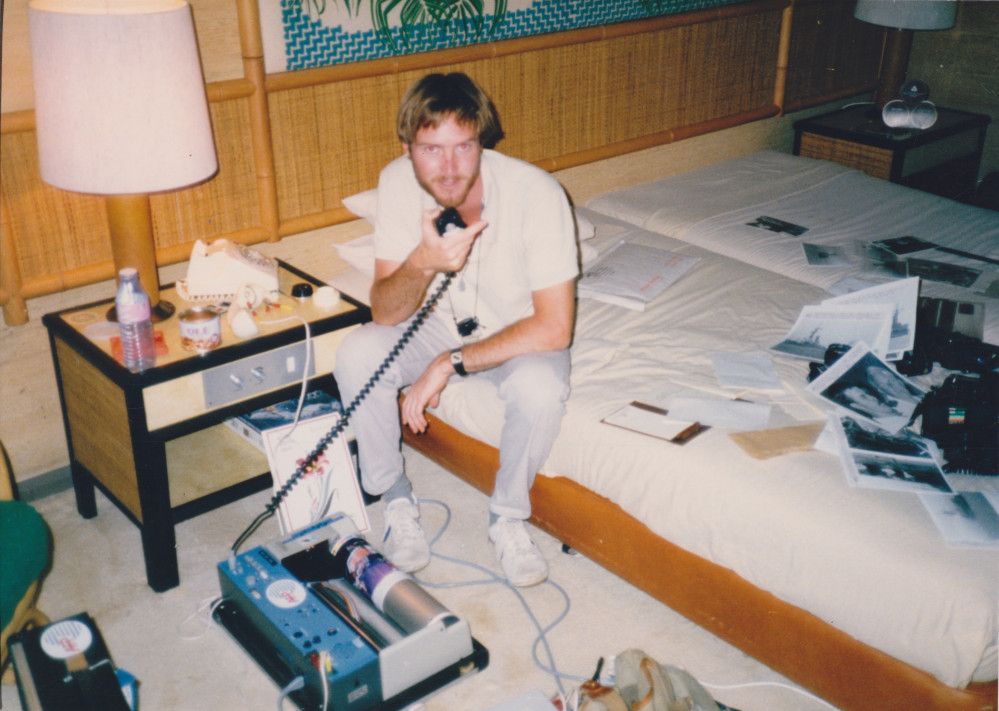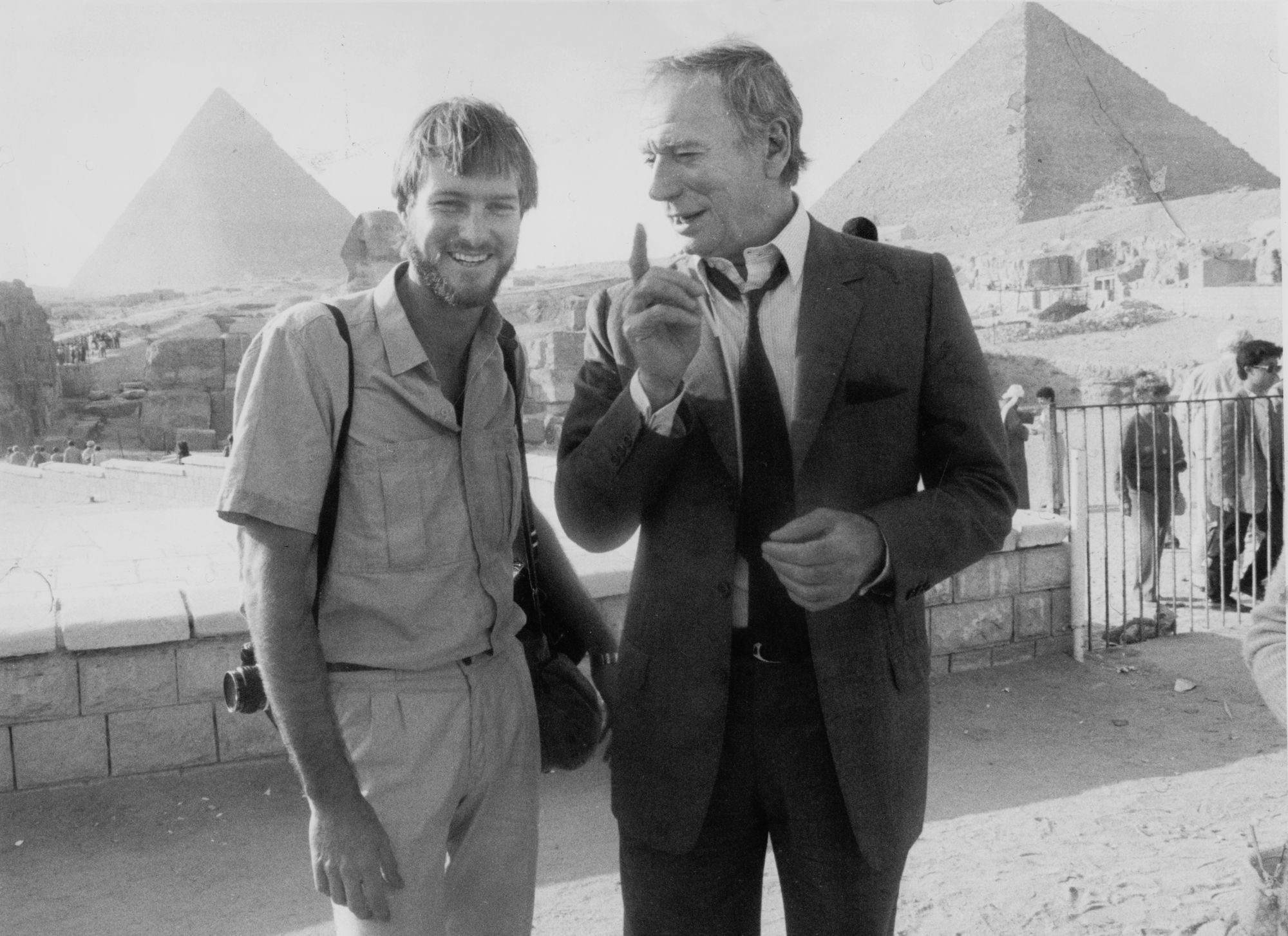Photography always seemed to be a part of my family.
My dad was a great historian, traveler and storyteller. We lived overseas a lot during my dad’s career as a diplomat. I remember my first camera being a tiny Minox spy type camera that took 16mm film negatives. It was a present on my 13th birthday while I was living in Morocco. It was not very practical, as it was difficult to get that size film processed and printed. Nonetheless, I thought it was very cool and tried my best to snap away.

So the seed of photography was planted in me from a relatively young age.
When we eventually landed back in the US, I started taking pictures for my high school yearbook and that’s when the idea of being a photographer started to take hold. I was a somewhat shy teenager and compensated for it by being one of the school’s jokesters. I started taking photos and the entry it provided me into all aspects of high school life implanted in me the seeds of what would end up being a lifetime career in photojournalism. Through photography I was able to experience all sorts of facets of life and the world around me.

Off to college I went and I briefly continued as a photographer for the university newspaper, UC Santa Barbara’s Daily Nexus.
However, the lure of travel and adventure supplanted my interest in photography and during the next three years I transferred to three different colleges traveling overseas to France and eventually graduating from Berkeley in 1981 with a degree in French history.
Now the question was what to do next.
Photography always seemed to be a part of my family.
My dad was a great historian, traveler and storyteller. We lived overseas a lot during my dad’s career as a diplomat. I remember my first camera being a tiny Minox spy type camera that took 16mm film negatives. It was a present on my 13th birthday while I was living in Morocco. It was not very practical, as it was difficult to get that size film processed and printed. Nonetheless, I thought it was very cool and tried my best to snap away.
So the seed of photography was planted in me from a relatively young age.
When we eventually landed back in the US, I started taking pictures for my high school yearbook and that’s when the idea of being a photographer started to take hold. I was a somewhat shy teenager and compensated for it by being one of the school’s jokesters. I started taking photos and the entry it provided me into all aspects of high school life implanted in me the seeds of what would end up being a lifetime career in photojournalism. Through photography I was able to experience all sorts of facets of life and the world around me.
Off to college I went and I briefly continued as a photographer for the university newspaper, UC Santa Barbara’s Daily Nexus.
However, the lure of travel and adventure supplanted my interest in photography and during the next three years I transferred to three different colleges traveling overseas to France and eventually graduating from Berkeley in 1981 with a degree in French history.
Now the question was what to do next.
I contemplated going into filmmaking and graduate school, but when my freshman college roommate, George Azar, came up with the idea to be photojournalists and travel to Lebanon (his ancestral home), it resonated…
“Let’s do it.”

I set out on an epic journey from San Francisco to Philly via Greyhound. There I picked up George and we flew to Paris via New York City.
In Paris, we had the ingenious, but far fetched idea for two unknown photojournalists to interview the recently exiled Iranian President Bani Sadr. Amazingly after a few weeks we were accorded an audience with him at his well-guarded villa in the suburbs of Paris. Our first journalistic coup!
From Paris we caught the “Magic Bus” to Istanbul and then another bus across Turkey (I don’t remember much of that trip as I was suffering from intense Turkish Revenge) to Syria.
Eventually we ended up, after almost three month of travel, on the doorsteps of George's Lebanese family home in Kousba (in the mountains in northern Lebanon).
I get ahead of myself.
After deciding to be international photojournalists, we needed to find some agency willing to back us with financing or at least a letter of introduction in order to obtain press credentials. We prepared a portfolio of a dozen or so black & white images and made the rounds of photo agencies in New York City. All except one said, “Good luck and when you get there contact us.” The one lone agency that decided to help us was PhotoReporters. Great. However, they said that Lebanon was their Paris partner Imapress’s responsibility so we needed to see them. So off to Paris we went. We met up with them and they issued us a letter of introduction indicating we were photographers covering Lebanon for them. I will always be grateful to them for taking the chance on us. I feel bad that Imapress and PhotoReporters went under a long time ago.
One the other reasons we decided to go to Lebanon, other than the fact that we had a place to stay with George’s family, is that George, who had studied politics and international relations at Berkeley, was convinced that the Israelis would invade Lebanon. As it turned out he was right. We arrived in Lebanon on Thanksgiving Day 1981. We entered Lebanon with a hired taxi from Syria (completely broke) and passed through the Palestinian refugee camp of Nahr al-Bared on the outskirts of Tripoli at night. It was our first encounter with gunmen and will always remain seared in my mind (which is something considering how much I have forgotten). We reached George’s family home late at night and fortunately they were willing to pay for the taxi. We holed up there for some time getting to know the neighborhood, the local militia called The Tigers of Dany Chamoun. We climbed up to his villa one day and found him blasting away from the balcony with his kalashnikov at nothing in particular (most birds were either dead or kept their distance). He invited us up for tea and a chat. Bizarre. But that was Lebanon in those days.
With some cash provided by George’s family we made our way to Beirut and took up lodging at the Youth Hostel next to the Syrian Intelligence building. We were the only boarders there for most of the time and lived on boiled egg and pita bread sandwiches. The characters and the stories of those wondering souls that stumbled into the Youth Hostel are worth recounting but maybe at another time. I went to the UPI (United Press International) office and they gave me some black & white film. George went to the AP (Associated Press) office and they did likewise.
So now to take pictures.
Well, the thing to do in Beirut at that time was to go down to the Green Line that separated Beirut into the Muslim-controlled West and Christian-controlled East and cover street battles. The Lebanese Civil War has been going on since 1976 and was not really big news. But if you got some decent action photos, the wires (UPI and AP) would buy them. And that’s how I started as a professional international photojournalist. At that time in Beirut in 1981, until the Israelis invaded on 5 June 1982, I was the only non-Lebanese photographer in Lebanon.
Follow on Instagram for live updates:

